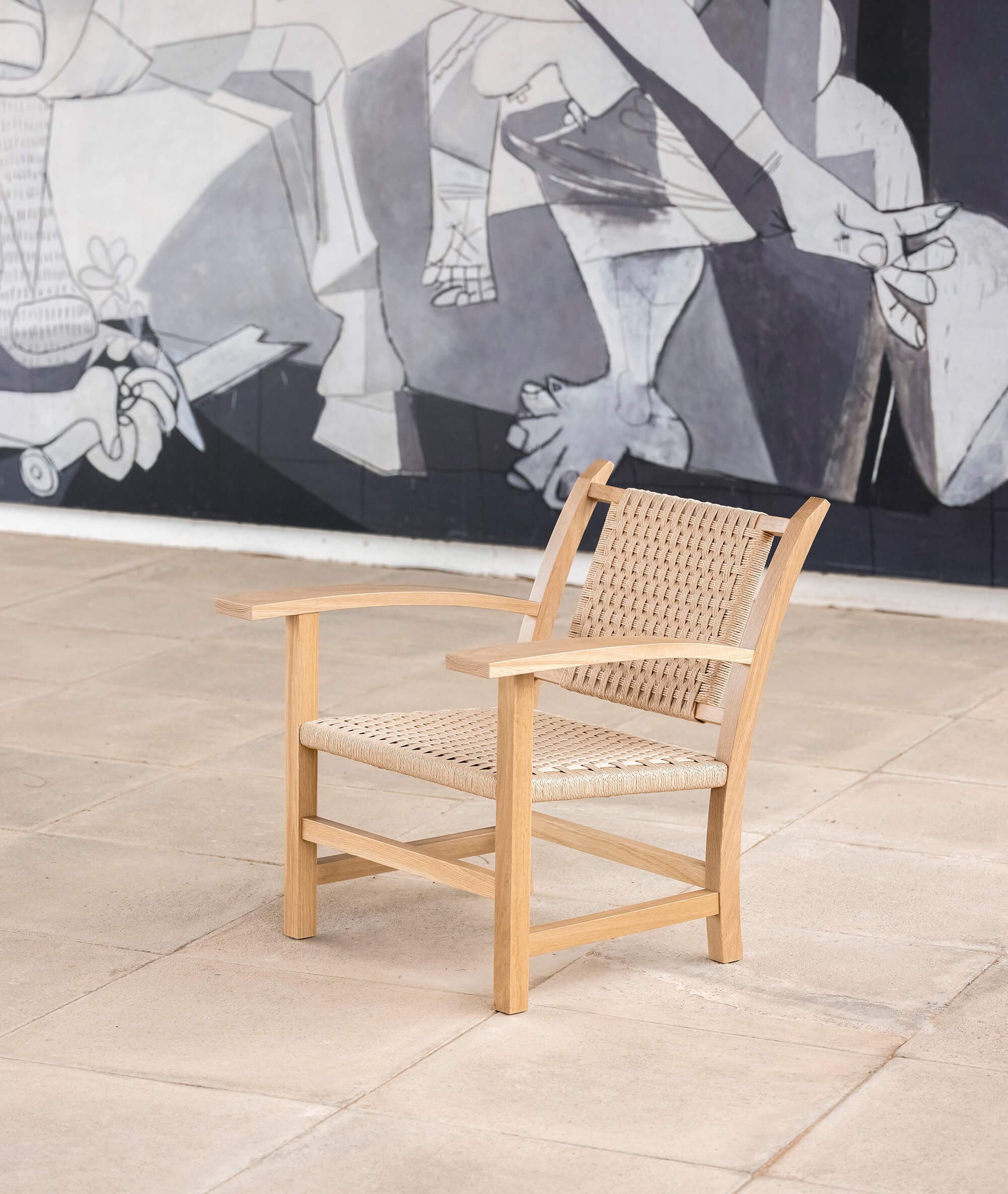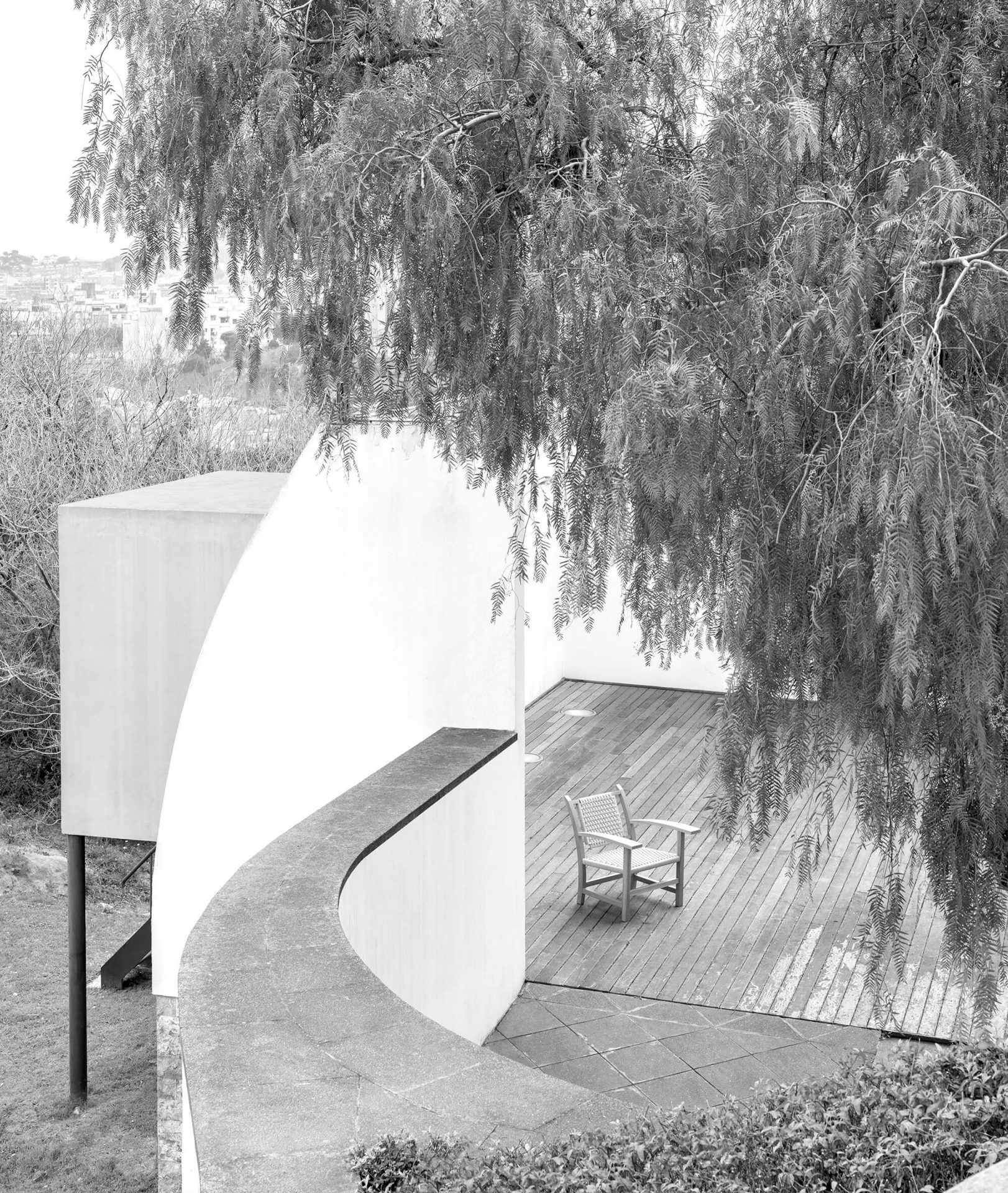The Pavilion of the Republic


Sert’s architectural rationalism, the emotional paintings of Miró and Picasso and the warmth of Torres Clavé’s furniture served as a means of political propaganda and laid the foundations of a modern movement that achieved recognition in exile.
The World’s fair in Paris lasted only a short time: it opened on May 25th, 1937 and closed on November 25th of the same year. Inside that diaphanous space, a sculptural calmness was experienced for a second in the face of the imminent chaos that lurked in Europe.

The 1937 pavilion
In autumn 1936, in the midst of the outbreak of the Spanish Civil War, the government of the Second Republic considered its participation in the Paris World’s Fair to be indispensable due to the enormous propaganda potential of the event and in order to turn Spain into a reference in terms of art, architecture and design.
On February 27th 1937, in Trocadéro Square, at the foot of the Eiffel Tower, the first stone was laid of what would become an architectural icon and a symbol of the Spanish modern movement: The Pavilion of the Republic, a piece by Josep Lluís Sert and Luis Lacasa. The pavilion, curated by the philosopher José Gaos, had two signatories: on the one hand Josep Lluís Sert, a prominent disciple of Le Corbusier and founder of GATCPAC (Group of Catalan Architects and Technicians for the Progress of Contemporary Architecture), and on the other Luis Lacasa, a member of the Communist Party and promoter of the Alliance of Antifascist Intellectuals for the Defense of Culture.

While Lacasa was close to regionalist architecture, Sert tended towards rationalism. Due to the short deadlines for the construction of the pavilion, Lacasa’s idea, based on brick construction, was discarded to make way for Sert’s proposal, which was based on a “dry” construction using prefabricated modules. In addition, as if the time and investment constraints were not enough, the construction plan had to be adapted to an irregular sloping terrain and had to respect the existing trees.
The 1,400-square-meter building, conceived by its architects as an empty container, became a symbol of innovation and talent, hosting the work of Spain’s most prominent artists and intellectuals. The writers Max Aub and José Bergamín, the poster designer and photomontage artist Josep Renau, the filmmaker Luis Buñuel, the sculptors Alberto Sánchez and Julio González, the painters Hernando Viñes, Joan Miró and Pablo Picasso and the architect Josep Torres Clavé, with a sample of his refined furniture, gave a shape, images and words to what was happening in Spain.


Although from the very beginning the event’s organizers asked Picasso for his collaboration, thus guaranteeing its success and public repercussion, he ended up being the one who delayed the inauguration. Guernica, later considered the great icon of 20th century Spanish painting, had a key place in the pavilion. Located on one of the walls of the courtyard, on the open floor, Sert and Lacasa had arranged the columns supporting the building in such a way that none of them prevented the painting from being seen in its entirety.
In the central part of the courtyard was also the Mercury Fountain, a work by Alexandre Calder, the only foreign artist participating in the pavilion. In the same area, covered with a canvas that served as an auditorium, were several wooden armchairs with rope backs designed in 1934 by Josep Torres Clavé which we currently produce at Mobles114.

The current building
On the occasion of the 1992 Olympic Games, the City Council of Barcelona commissioned architects Antoni Ubach, Miquel Espinet and Juan Miguel Hernández León to build a replica of the pavilion. This construction, which respects the original project, is located in Barcelona’s Vall d’Hebron district and is currently home to the CRAI, one of the world’s most important archive-libraries on the Second Republic, the Civil War, exile, Franco’s regime and the Spanish transition.
The Torres Clavé Armchair
As a small tribute to the legacy of the architect and designer Josep Torres Clavé and to this design that has been with us for years and is part of our Classics catalog, photographer Jara Varela captures in this collection the beauty of the armchair inspired by the popular Ibizan “cadirats” in different corners of the pavilion, as it must have been seen by visitors in 1937.
Torres Clavé, co-founder with Antoni Bonet of MIDVA (Furniture and decoration for the current home), mastered the search for comfort, which becomes evident in this design combining devotion to craftsmanship with a rational exercise in ergonomics and proportions.

Pictures by: Jara Varela


